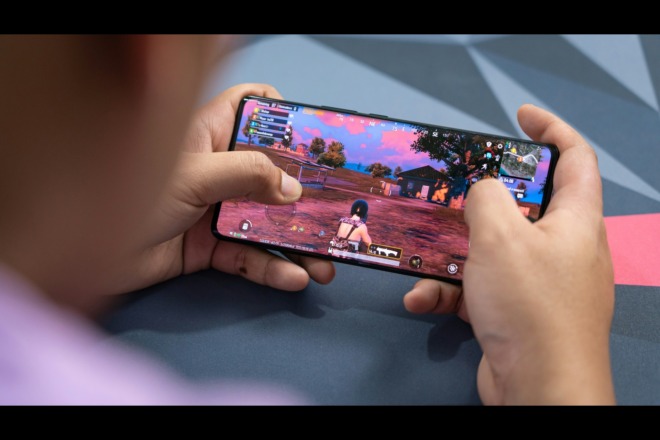If you’re looking for a marketing method that breaks traditional barriers and can be done on a dime, guerrilla marketing may be just the thing you’re looking for. Jay Conrad Levinson coined the phrase in 1984 in his book by the same name. It simply means unconventional, and usually inexpensive, ways of getting the word out about a brand or product. There are very few studies looking specifically at guerrilla marketing on its own, but one of the beverage industry found 56 percent of consumers agreed they were influenced by guerrilla marketing strategies. Of course, some campaigns are more successful than others. You might recall the ALS Ice Bucket Challenge from a few years back. It was to pour a bucket of ice water over you to raise awareness and money for ALS. The campaign wound up being mentioned 2.2 million times on Twitter, with 1.2 million videos posted on Facebook and increasing donations by over $9 million. The idea was unconventional and cost the organization very little in marketing. Use the example as inspiration for finding your own unique marketing campaign.
1. Set a Goal
What do you wish to accomplish with your marketing campaign? Do you want higher sales, to raise money for a cause or more brand awareness? When you understand the mission, it’s much easier to come up with a creative idea that draws attention. You should also set a budget goal. However, as with most types of marketing, it is sometimes difficult to track exactly how effective guerrilla marketing is. Put in some things to help you track, such as specific landing pages or special offers.
2. Know Your Audience
Guerrilla marketing falls into several categories/techniques, including:
- Street marketing: Sending a team out into the world to talk up your brand. They might wear a T-shirt or use your product in public, for example. Influencer marketing is a bit like online street marketing.
- Ambient marketing: Getting your brand recognition without being pushy. This might mean wrapping a car, setting up a pop-up booth where you let people sample your product or placing ads in prominent spots.
- Grassroots: Winning customers one at a time by interacting with them. This looks like setting up a trade show exhibit or posting comments on social media.
- Ambush marketing: Tagging onto an event that another brand already sponsors. During one of Apple’s iPhone releases, Samsung set up a pop-up store within a few feet of an Apple flagship store. It knew there would be a ton of people trying to get the new iPhone, but also some customers unhappy over the price or lack of stock.
Guerrilla marketing has sometimes been called predatory marketing, so you must decide how far you’re willing to go while still retaining your integrity.
3. Understand Your Own Brand
Figure out who you are and what you stand for as a brand. While setting up a pop-up might be right for Samsung, the idea of going after your competitors in such an obvious way may leave a bad taste in your mouth. Your style might be more to set up your own event or launch party and use social media influencers and street teams to get the word out, especially to the media. Once you understand your core values as a brand, it’s easier to decide which marketing tactics are right for you.
4. Get Creative
Many experts describe true guerrilla marketing as a viral form that doesn’t cost much money. If you have to throw thousands of dollars at ads, then it’s a different form. Find something no one else has done but grabs the attention of your target audience. You may want to enlist the help of a professional ad person to come up with your campaign. Even if you can’t afford expensive advertisements, a freelance marketer can help you come up with a plan to drive your sales. Think about what others in your industry have already done. What can you do that’s surprising and different?
5. Connect on an Emotional Level
In an analysis of 1,400 case studies of advertising campaigns, researchers found those with emotional content performed twice as well as ones with rational content. Humans have four basic emotions: happiness, sadness, fear and anger. The key to building a bond with your customers is tapping into positive and negative emotions. Have you ever watched a television commercial and cried? That was the brand tapping into some emotion and connecting with you.
6. Hone in on the Small Things
With guerrilla marketing, you don’t necessarily need a huge campaign — you simply need to keep your eyes open for opportunities to promote your brand in unique ways. If you’re in an airport, lay some flyers out on a table in the waiting area. Do the same at doctors’ offices and in dentists’ waiting rooms. Ask your library if you can put a postcard ad on their bulletin board. Sponsor little league events. Prepare a 60-second pitch to throw at anyone you meet. Essentially, the best guerrilla marketing finds opportunities for promotion in unexpected places. You must be bold and ready to try new things. Some of it might not work, but that’s OK, because it only costs you a little time and effort.
Guerrilla Marketing in a Digital Age
While it’s true that a lot of marketing today is digital, that doesn’t mean all of it has to be. The advantage of guerrilla marketing tactics is that you can take them offline and online. Spend time in social media groups and answer questions related to your industry. Set up a street team and ask them to try your products and mention them to followers on their social media pages. Enlist the help of influencers if it fits in your small budget. More than a single type of marketing, guerrilla is more of a mindset that looks for opportunities to get the word out and finds them everywhere.
CHAPTER 10: Close Range Marketing CHAPTER 12: Word-of-Mouth Marketing
The Small Business Marketing Guide: Introduction
Chapter 1: Successful Viral Marketing Campaigns
Chapter 2: Influencer Marketing
Chapter 3: Conversational Marketing
Chapter 4: CMS Marketing
Chapter 5: Brand Marketing
Chapter 6: Scarcity Marketing
Chapter 7: Transactional Marketing
Chapter 8: FOMO Marketing
Chapter 9: Neuromarketing
Chapter 10: Close Range Marketing
Chapter 11: Guerrilla Marketing
Chapter 12: Word-of-Mouth Marketing
Chapter 13: Target Marketing
Chapter 14: Diversity Marketing
Chapter 15: Undercover Marketing
Chapter 16: Cause Marketing
About The Author
Eleanor Hecks is the Editor-in-Chief of Designerly Magazine, an online publication dedicated to providing in-depth content from the design and marketing industries. When she's not designing or writing code, you can find her exploring the outdoors with her husband and dog in their RV, burning calories at a local Zumba class, or curled up with a good book with her cats Gem and Cali.
You can find more of Eleanor's work at www.eleanorhecks.com.


